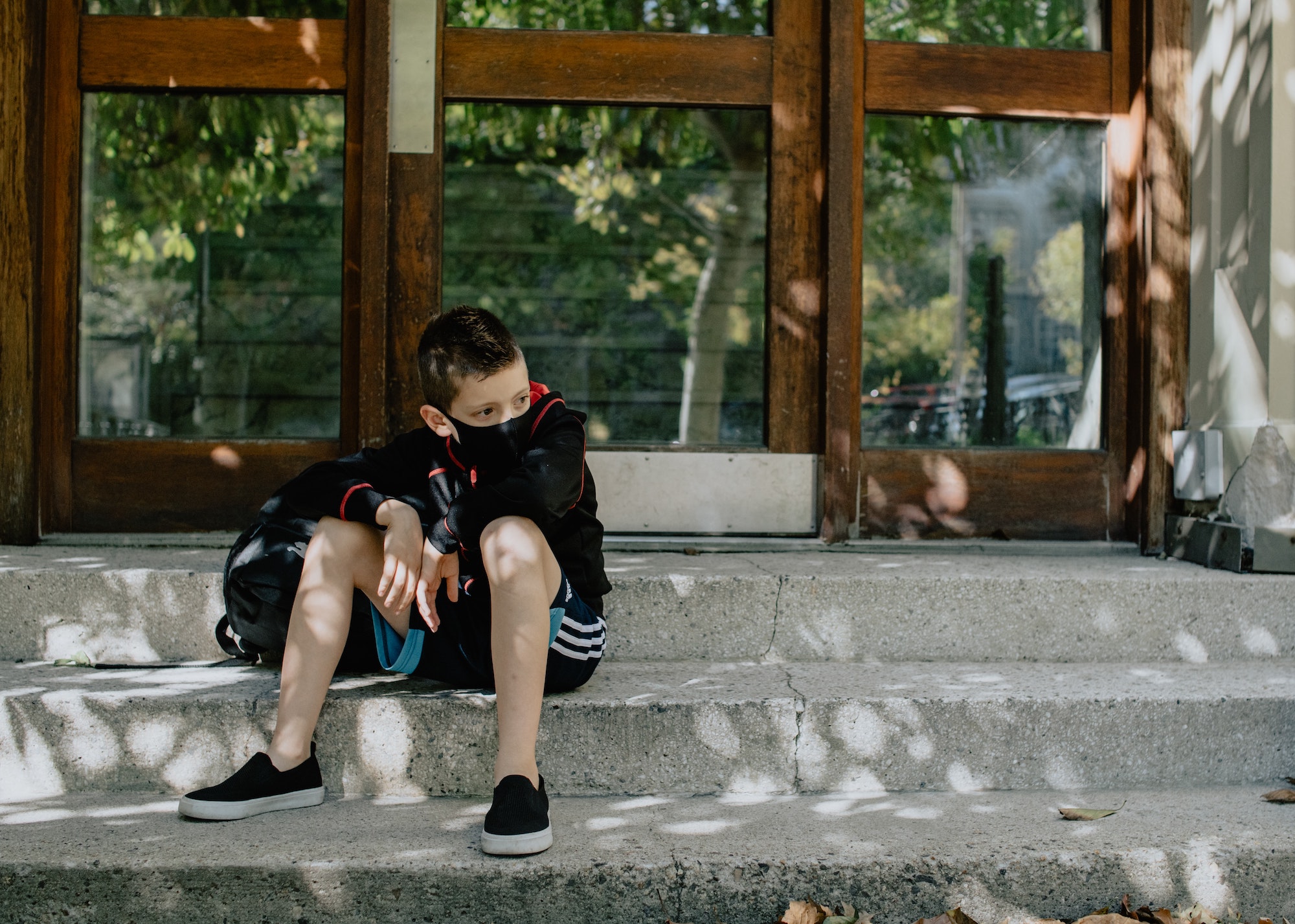Although much is reported in the media about how children and teenagers seem to be less susceptible to the severe forms of manifestation of the novel coronavirus, little has been said so far about the impact of the pandemic on their biopsychosocial development, once subjected to daily disruptions that are not yet able to understand in depth. This is the theme, however, of the debate proposed by the team of Professor Priscilla Oliveira Silva Bomfim, coordinator of the Center for Research, Teaching, Dissemination, and Outreach in Neuroscience (Núcleo de Pesquisa, Ensino, Divulgação e Extensão em Neurociências – NuPEDEN), of the Neuroscience Graduate Program at the Institute of Biology of UFF.
Recently, the article “COVID-19 pandemic impact on children and adolescents’ mental health: Biological, environmental, and social factors“ was published by the renowned magazine Progress in Neuropsychopharmacology & Biological Psychiatry, written jointly by the team led by Priscilla, composed by Camila Saggioro de Figueiredo, Poliana Capucho Sandre, Liana Catarina Lima Portugal, Thalita Mazala-de-Oliveira, Luana da Silva Chagas, Ícaro Raony, Elenn Soares Ferreira, Elizabeth Giestal-de-Araujo, and Aline Araujo dos Santos.
According to the professor, the questions that motivated the research started from the observation of the behavior of children and adolescents who showed changes in attitude, mood, and social interaction due to social isolation. Among these changes, changes in sleep and diet stand out, aggressiveness, regressive behavior, fear of loss, and death of family members. Several were the elements that composed the multifactorial analysis studied by the research team, such as the distance from the school environment and the engagement in virtual classes; restrictions in relation to playing outside, and natural spaces; face-to-face connection with family members; the increase in domestic violence and also neglect; the lack of affective exchange in environments other than the familiar; frustration and uncertainty regarding the opening and closing of cities.
Based on these observations, the researchers started a bibliographic review of studies developed in other epidemics, considering that in this current pandemic of the novel coronavirus, there was still little material published about the public in question when the research started. “When looking for data in the literature that related non-physiological stress (distress) to the possibility of developing a mental disorder, we pivoted to the ‘yellow light,’ understanding that we need to be in a constant state of alert, noticing the signs that this population shows us,” emphasizes the teacher.
The perception of these signs pointed out by the researcher, however, can be much more complex than imagined, as they are not always visible or even verbalized by them. “This is a population that has no maturity (physical and/or neurological, psychological) and does not understand the proportion of everything we are experiencing; however, these ‘signs’ can cause immediate, medium, and long-term damage to the mental health of these children and adolescents, who are in full development,” she emphasizes.
According to the coordinator, on first thought, this population needs social contact with nature, as well as a healthy and safe environment for their full development; on the other hand, social isolation is still the best alternative for controlling the pandemic since there are no public policies in Brazil capable of facing the health challenges presented, thus increasing the risks and uncertainties.
Considering this situation, the NuPEDEN team proposed a discussion that connects the biological, environmental, and social dimensions to understand the wider effects caused by the pandemic on the child and teenage population, as well as the need for proposing long-term research and public policies. “We emphasize that an investment in this area is essential, in order to mitigate the impact on the mental health of children and adolescents, offering them support and support, as well as for their families and caregivers,” highlights the UFF professor.
It is already known that the direct consequences of the pandemic in this population can range from the appearance of skin lesions to, for example, the development of Kawasaki Syndrome, which causes inflammation in the body’s blood vessel walls. But the indirect impacts are still unknown, as suggested by the study developed by NuPEDEN, requiring specialized monitoring for a longer period.
Some of these risks, however, can already be seen, according to Priscilla Bonfim. Regarding the conditions of stress and neuroinflammation, trends in the development of diseases such as depression and/or anxiety; psychological problems such as an increase in worrying and tendency to irritability; dysfunctions of the hypothalamic-pituitary-adrenal axis, which regulates the performance of key substances in the brain, leading to problems related to the immune, endocrine, and nervous systems. Regarding alimentation, the research highlights a greater intake of high-calorie foods, as it generates a feeling of reduced anxiety, which can lead to childhood obesity, impact learning and memory, and affect the composition of the intestinal microbiota, influencing brain functions.
The study also highlights that the formation of social bonds was fundamental for the evolution of the species, guaranteeing not only its survival but a healthy cognitive, emotional, endocrine, and immunological development. In this sense, social isolation can affect this process and, along with the other factors, decrease physical activity, increase the exposure time to screens, lead to irregular sleep patterns, and have less appropriate diets for maintaining health, broadly impacting the regulation of the physiological system.
Another point observed portrays how the pandemic affects the population with lower social strata, with fewer conditions of social contact through virtual networks, access to remote classes, and who is more exposed to situations of domestic violence and family neglect. “Science points out that these issues impact the synthesis of vitamin D, through low exposure to the sun, to the risk for the development of schizophrenia, addictions (substance abuse), and suicidal ideation, highlighting how environmental factors are of greater importance in the cognitive training and emotional aspects, as already reported in countless previous works on the effect of distress in childhood and adolescence,” emphasizes the teacher.
Among the suggestions brought by the NuPEDEN group to minimize the impact of the pandemic on the lives of children and adolescents, we highlight the urgency of guaranteeing this population and their families access to adequate mental health care, as well as financial assistance policies to prevent domestic violence. “We emphasize the urgency of carrying out these actions in order to avoid future consequences both on individual health and on public and private health systems, consequences that border onto the unpredictable, considering that only with the long-term monitoring of children and adolescents will it be possible to know the real dimension of the side effects of the pandemic in the development of this population,” concludes Priscilla.




